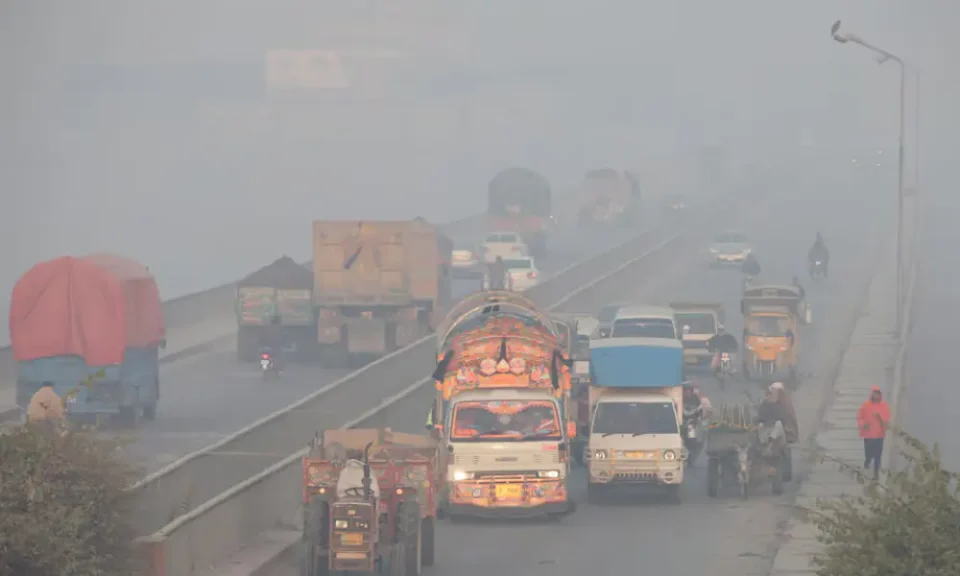Pakistan Must Clear the Air on Smog — Here’s the Way Forward
October 9, 2025
As winter approaches, smog season is once again looming over South Asia — with Pakistan, India, and Bangladesh bracing for the familiar haze that blankets their skies every year. In Pakistan, the toxic mix of pollution, weak governance, and lack of enforcement threatens public health and daily life, especially in major cities like Lahore, Karachi, Islamabad, and Faisalabad.
But there’s hope — and a clear path forward. The blueprint for cleaner air already exists. Cities like London and Beijing have shown that with the right mix of policy, technology, and determination, even the worst air quality can be transformed. Pakistan can do the same by modernising industries, reducing transport emissions, and ending crop burning.
🌫️ The Smog Crisis: A Recurring Nightmare
Every winter, stagnant weather traps pollutants near the ground, creating a thick blanket of smog that triggers serious respiratory and heart diseases. According to the UN’s IPCC report, particulate matter and ozone are major contributors to cardiopulmonary illnesses, especially among children and the elderly.
In Lahore, the Air Quality Index (AQI) crossed 1,500 in November 2024, making it one of the most polluted cities in the world. Despite years of public outcry, Pakistan still lacks a unified, science-backed plan to tackle this deadly problem.
🌍 Lessons from London and Beijing
When London faced its historic Great Smog of 1952, thousands of lives were lost. In response, the UK government passed the Clean Air Act of 1956, introducing strict emission laws and a rapid transition away from coal.
Similarly, China took bold steps a few decades later — tightening fuel standards, upgrading industries, and promoting clean energy. Within a few years, pollution levels dropped dramatically.
Both cases prove that strong policy and enforcement can clean the air — and Pakistan can follow this example.
🚗 Engines of Pakistan’s Smog
The transport sector is the biggest contributor to air pollution. Old and unregulated diesel trucks and buses continue to dominate roads, while inspection systems remain inconsistent. Substandard lubricants, aging vehicles, and backup diesel generators further worsen emissions.
In cities, motorbikes and rickshaws emit large amounts of black carbon and nitrogen oxides — major causes of the winter haze.
Meanwhile, brick kilns around Punjab still burn low-grade coal and waste fuels, while many industries — including steel, textiles, and cement — lack proper emission control systems. Poor maintenance, weak audits, and minimal monitoring make the problem worse.
The agriculture sector adds to the crisis through crop residue burning. Every October and November, farmers torch leftover straw, sending massive smoke plumes into the air. Combined with Indian Punjab’s crop fires, this smoke engulfs Lahore and the central plains in toxic haze.
💨 A Roadmap for Cleaner Air
To reclaim its blue skies, Pakistan must act on multiple fronts:
1. Clean Up Transport
-
Enforce vehicle inspections and phase out outdated diesel vehicles.
-
Ensure all fuel meets Euro 5 and Euro 6 standards.
-
Promote electric buses and cleaner public transport to reduce urban pollution.
2. Modernise Industries
-
Convert brick kilns to efficient zigzag designs.
-
Mandate real-time emission monitoring for factories.
-
Conduct third-party audits and publish compliance reports for transparency.
3. End Crop Burning
-
Enforce a ban on crop residue burning with strict penalties.
-
Support farmers through incentives for in situ residue management.
-
Create markets for biomass — such as using crop waste in industrial boilers and biogas plants.
-
Strengthen cross-border coordination since pollution doesn’t stop at national lines.
❤️ Why It Matters
Smog doesn’t just affect visibility — it silently damages lives. It causes asthma, lung cancer, heart attacks, and pregnancy complications, and worsens climate change.
According to experts, targeting short-lived pollutants like black carbon, methane, and ozone precursors can deliver immediate health and climate benefits.
🌱 The Path Ahead
If London could clean its skies and China could reverse decades of pollution, Pakistan can do it too. All it needs is political will, scientific guidance, and consistent enforcement.
By curbing transport emissions, upgrading industries, banning crop burning, and prioritising clean energy, Pakistan can once again breathe easy. The science is clear — the only thing missing is resolve.
With smart, science-driven policies, Pakistan can turn grey skies blue — and smog into history.

